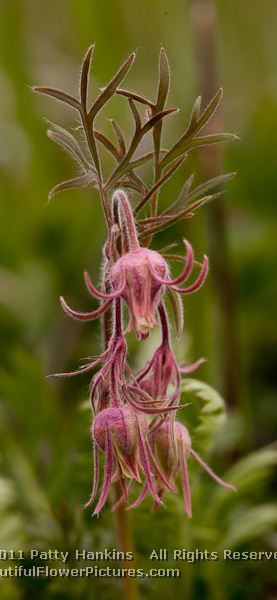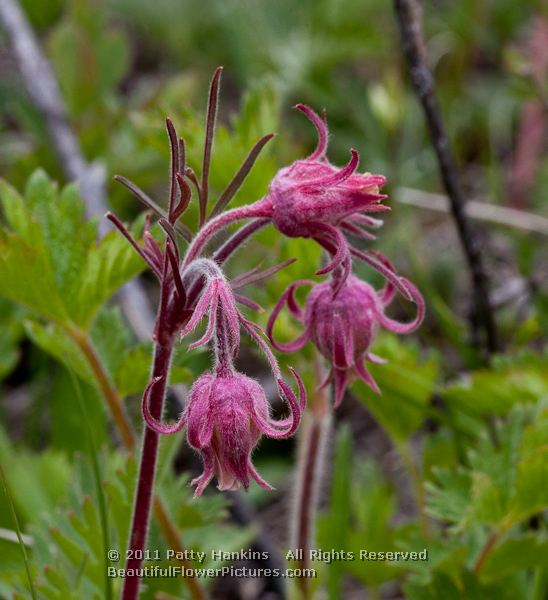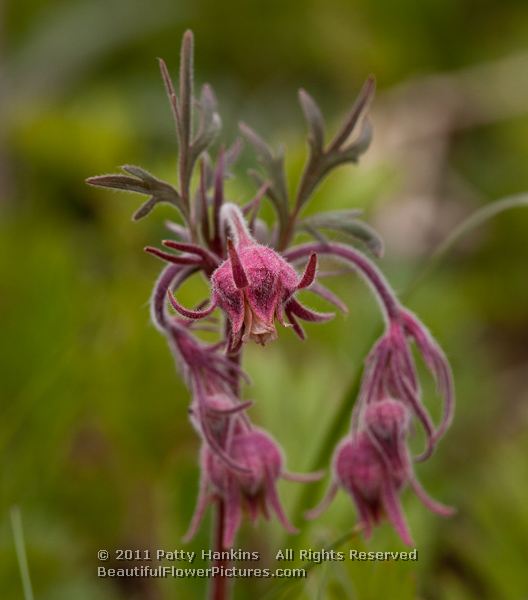© 2011 Patty Hankins
One of my favorite wildflowers I discovered my trip to Yellowstone National Park in June was Prairie Smoke (Geum Triflorum). When I first spotted it – I had no clue what it was – but I knew I wanted to take lots of photographs of it. I couldn’t remember ever seeing a wildflower with the combination of uniquely shaped flowers, fuzzy texture and fascinating leaf structure that reminded me of antlers.
Prairie Smoke, also known as Old Man’s Whiskers and Purple Avens, is a member of the Rose family. Native to much of the Northern and Western United States and Canada, this wonderful wildflower grows to about 18″ tall. It is easily identified by it’s bell shaped fuzzy reddish-purple flowers. After pollination, the flowers turn upward to aid dispersal of the seeds. The flowers are less than 3/4″ wide. The leaves are up to 7″ long and divided into multiple tooted segments.
Prairie Smoke grows easily in many different ecosystems. It can adapt to dry, moist or wet soil – sun, partial shade or full shade. It is often found growing in open woods, mountain meadows and grassland prairies.
Many Native American tribes used Prairie Smoke for medicinal purposes. It was used to treat wounds and coughs. An infusion of the roots was often used to treat sore eyes. It was often given to horses as a stimulant before a race. and the seeds were used to create purfume.
© 2011 Patty Hankins
Prairie Smoke can be grown from seeds or from a division of the rhizome. For the rhizome method of propogation the plants should be split and planted in early spring. Seeds should be collected in late summer, stored for the winter, and then planted in the spring.
More information about Prairie Smoke can be found online at
Burke Museum of Natural History & Culture
Kemper Center for Home Gardening
Lady Bird Johnson Wildflower Center
Michigan Natural Features Inventory





Beautiful, I can see why you were taken by it!!! Does the flower open much mor then we see here?
Pat
This is only as far as I saw them open – don’t know if they open further. I photographed them in June in 2011 – I’ll be back in Yellowstone in July of this year – hope to find more – and then I’ll see if they open further